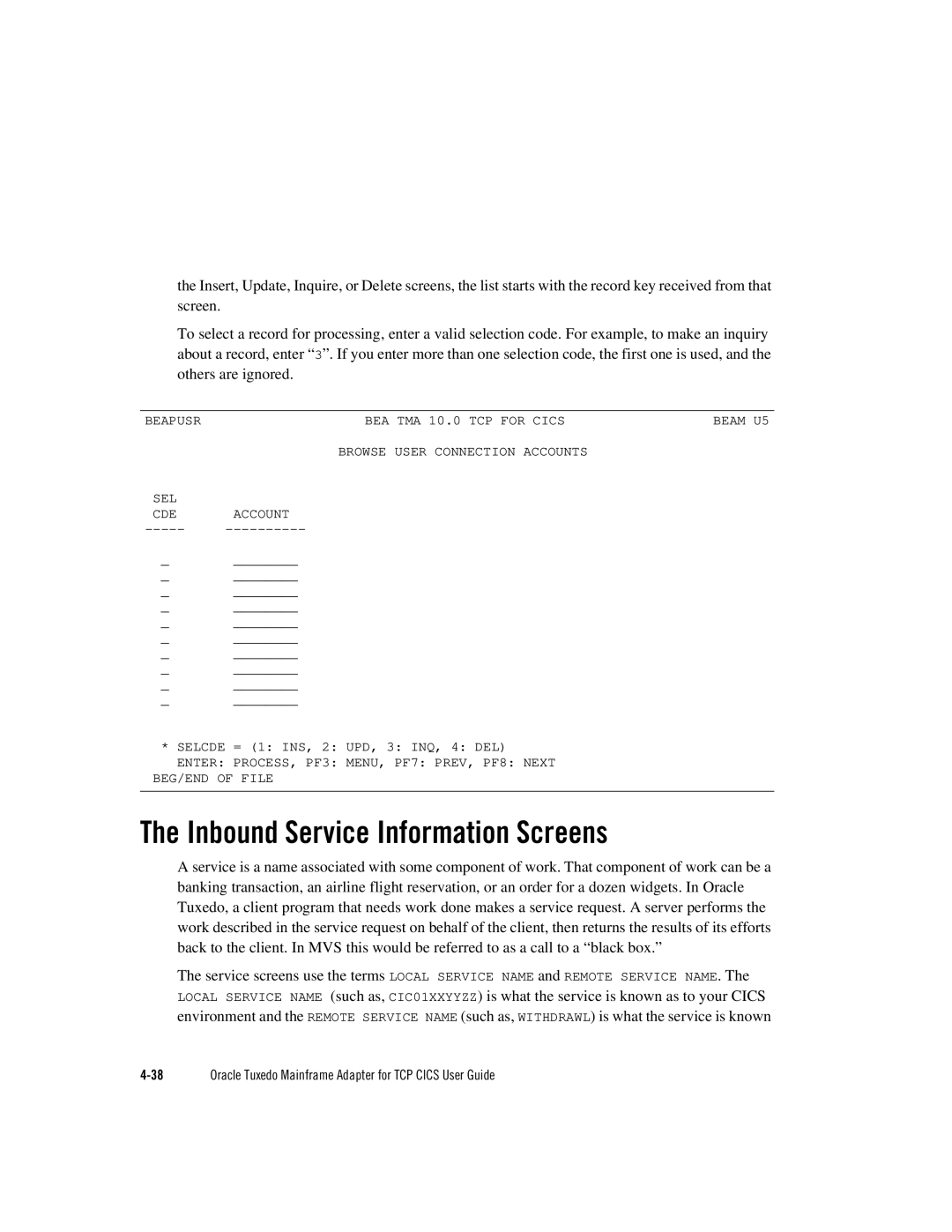
the Insert, Update, Inquire, or Delete screens, the list starts with the record key received from that screen.
To select a record for processing, enter a valid selection code. For example, to make an inquiry about a record, enter “3”. If you enter more than one selection code, the first one is used, and the others are ignored.
BEAPUSR | BEA TMA 10.0 TCP FOR CICS | BEAM U5 |
BROWSE USER CONNECTION ACCOUNTS
SEL | ACCOUNT |
CDE | |
_ | ________ |
_ | ________ |
_ | ________ |
_ | ________ |
_ | ________ |
_ | ________ |
_ | ________ |
_ | ________ |
_ | ________ |
_ | ________ |
*SELCDE = (1: INS, 2: UPD, 3: INQ, 4: DEL)
ENTER: PROCESS, PF3: MENU, PF7: PREV, PF8: NEXT
BEG/END OF FILE
The Inbound Service Information Screens
A service is a name associated with some component of work. That component of work can be a banking transaction, an airline flight reservation, or an order for a dozen widgets. In Oracle Tuxedo, a client program that needs work done makes a service request. A server performs the work described in the service request on behalf of the client, then returns the results of its efforts back to the client. In MVS this would be referred to as a call to a “black box.”
The service screens use the terms LOCAL SERVICE NAME and REMOTE SERVICE NAME. The LOCAL SERVICE NAME (such as, CIC01XXYYZZ) is what the service is known as to your CICS environment and the REMOTE SERVICE NAME (such as, WITHDRAWL) is what the service is known
Oracle Tuxedo Mainframe Adapter for TCP CICS User Guide |
